Vale do Catimbau National Park: A fascinating ecotourism destination
The Vale do Catimbau National Park, located in Pernambuco, is one of the most attractive destinations for ecotourism and adventure tourism in Brazil.
With its semi-arid landscape, impressive rock formations, cave paintings and rich biodiversity, the park is a place of great historical, cultural and natural interest.
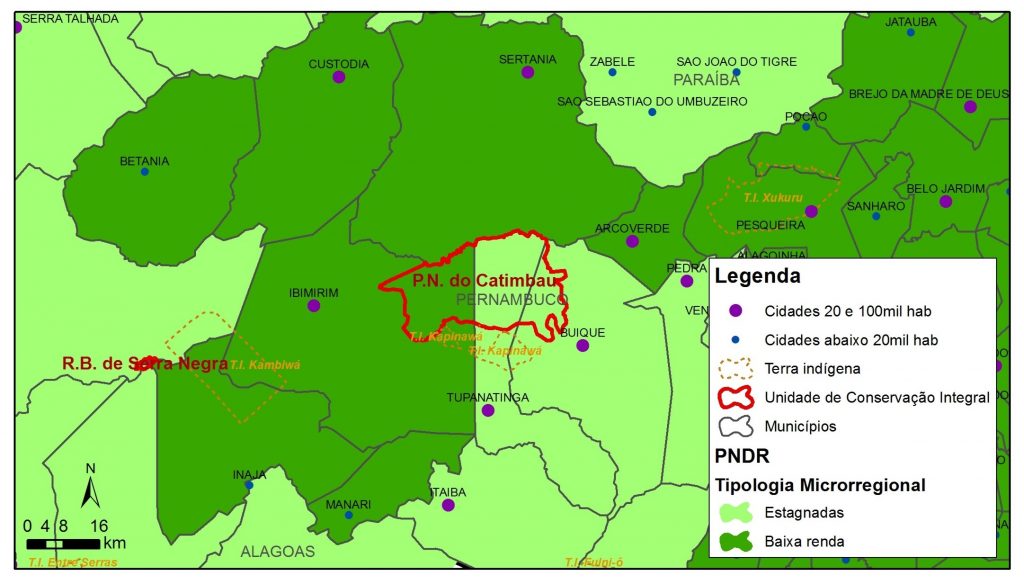
Features of the Park
The Catimbau National Park, also known as the Catimbau Valley, was created on 22 August 2002 and covers the municipalities of Buíque, Ibimirim, Sertânia and Tupanatinga, located between Agreste and the Sertão of Pernambuco.
It is the second largest national park in the state of Pernambuco, after the Fernando de Noronha National Marine Park.
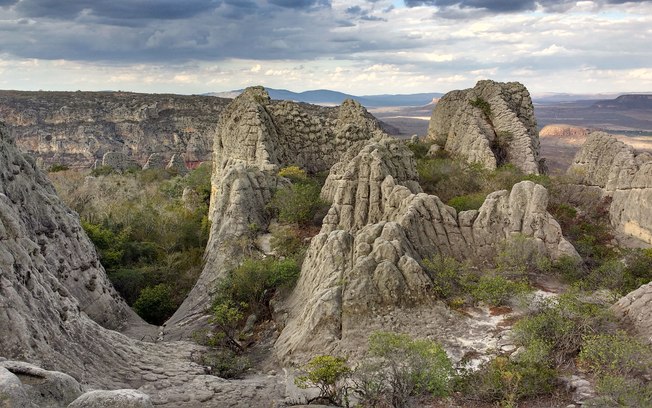
Archaeological importance
The main reason for Catimbau National Park’s fame is the Archeological Site of the Headless Men, an immense wall that houses a remarkable collection of cave paintings.
Scientists believe that these paintings were made some 7,000 years ago by the first inhabitants of the region, providing a unique opportunity to better understand how our ancestors lived.
The valley contains several archaeological sites, caves, prehistoric cemeteries and cave paintings dating back over six thousand years.

These features not only enrich the cultural value of the area, but also attract researchers and tourists interested in history and anthropology.
Biodiversity and unique landscapes
The Catimbau Valley is considered the second largest in Brazil, after the Serra da Capivara in Piauí. Its vegetation is very distinctive, consisting mainly of areas of Caatinga, a biome unique to Brazil.
The park has sands of different colours, a large number of caves and unique vegetation, different from other regions of the country.
The immense rock walls have unique shapes and are shrouded in intense mysticism, reflecting the region’s rich cultural heritage.
The term “Catimbau” in Tupi means “small unlit pipe” and is also associated with witchcraft practices and sacred places, such as those that house snakes.
Videos – Tourist Attractions in Vale do Catimbau National Park
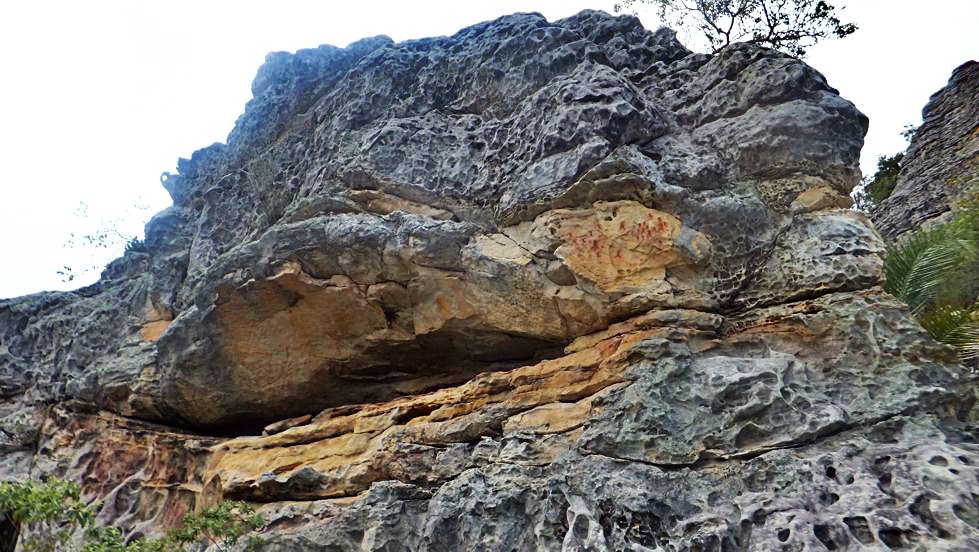

Vale do Catimbau - pinturas rupestres e a pré-história11:00

Parque Nacional Vale do Catimbau PE - Drone
Features of the Vale do Catimbau National Park PE
- 2nd largest archaeological park in Brazil
- A vast complex of more than 62,000 hectares of mountains and rocks
- There are approximately 2,000 caves and 28 cemetery caves.
- One of the last preserved areas of caatinga in Brazil
- Most of the trails are easy
- Get to know its postcard tourist attraction: Pedra Furada.
Main attractions of Vale do Catimbau National Park
1. Rock formations and gorges
The park is famous for its rock formations, carved by erosion over millions of years. The landscapes are breathtaking, with deep valleys, canyons and rocks that take on strange shapes, such as the Sunset, Pedra do Cachorro and Pedra da Águia.
2. Rock Art
The Catimbau Valley is home to some of the oldest cave paintings in Brazil, dating back some 6,000 years. The archaeological sites scattered throughout the park offer a glimpse into the life and culture of the prehistoric peoples who inhabited the region.
3. Vegetation and fauna
Despite its semi-arid location, the park has a rich biodiversity. The vegetation is dominated by the caatinga, with cacti, bromeliads and trees such as the juazeiro and mandacaru. The fauna includes species such as the armadillo, the mocó and various birds, some of which are endemic to the region.
4. Trails and walks
There are several trails of varying difficulty that allow you to explore the natural beauty of the park. Among the most popular are the Sunset Trail, the Torres Trail, the Igrejinha Trail, the Igrejinha Trail and the Mirante Trail. These trails take visitors to viewpoints from where they can admire the vast and dramatic landscapes of Catimbau.
The tours can include Pedra do Elefante, Camelo, Cavalo Marinho and Cachorro, allowing visitors to take advantage of the Sanctuary Trail.
It is also possible to visit the Canyon and the Pedra da Igrejinha, a series of impressive rock formations.
Another option is the Men Without Heads trail, which passes through the Chapadão trail and the Casa da Farinha trail, where the Cave Paintings are located.
These are just a few suggestions, but there are many more that the guide can recommend!
It should be stressed that it is obligatory to hire a guide, as access to these walks and trails is complex, and only those who know the area well can show you where to stop to catch a glimpse of the best scenery.
The park also has many waterfalls, ideal for a refreshing dip in the heat of the northeastern hinterland. These waterfalls can be found on the various trails and walks through the forest, so the guide will be able to suggest which ones are best to enjoy!
4.1 Umburana Trail (1.3 Km – 1h30)
The Umburana Trail in the Catimbau Valley
It’s a very quiet trail and along the way we give a little lesson in geology and morphology.
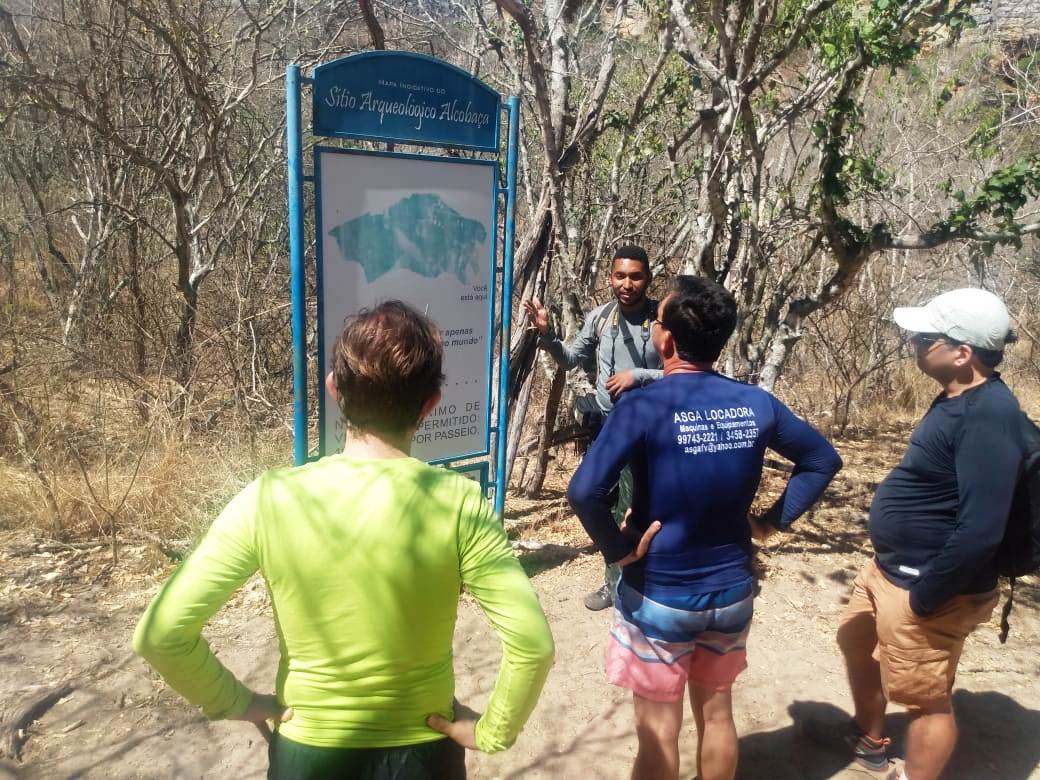
Vale do Catimbau - Trilha da Umburana
What makes it special is the observation of geological formations that look like different animals and objects,” explains João. The wind shaped stones really play with the imagination of the visitors.
One of the most curious is the open-mouthed witch and the ship.
Along the way, the guide will show you various animals carved into the sandstone plateau, such as lizards, capybaras, turtles, caimans, etc. In addition to the figures, the beautiful view of the walls in the background completes the scenery, which becomes even more special when you find a heart carved into the stone below.
4.2 Sanctuary Trail (3km – 2 hours)
Tourists begin the 3km walk, which takes an average of two hours.
The feeling of walking through dry vegetation in the dark is quite different. Lanterns will help you along the way, which will gradually get brighter as dawn approaches.
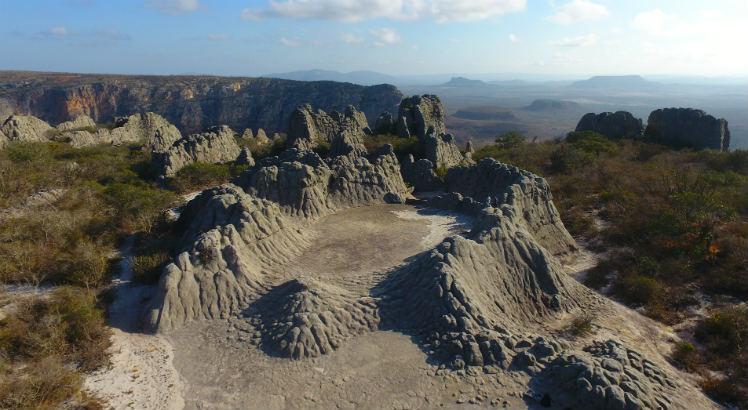
Vale do Catimbau - Trilha do Santuário
After a 40-minute walk, you will reach a point high up on a plain, perfect for watching the arrival of the King Star.
Then all you have to do is relax and enjoy the first rays of an unforgettable day.
This experience alone is worth getting up early for, but the trail has other surprises in store for early risers.
With the temperature still pleasant, tourists can begin the next stage of the walk, which will end in one of the most magical and fascinating places in the Vale do Catimbau National Park.
4.3 Torres Trail (5km – 2 hours)
The Torres Trail is one of the largest, most complete and beautiful trails in the Catimbau Valley.
Along its nearly 5 kilometre length, visitors will encounter breathtaking landscapes, unique scenery and art that is more than 6,000 years old.
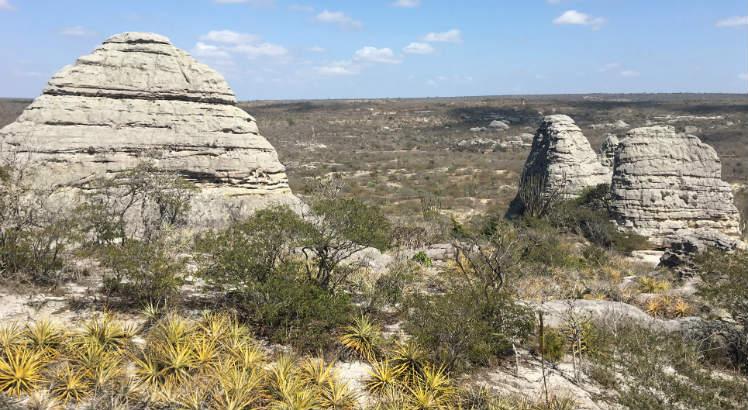
Vale do Catimbau - Trilha das Torres
There are many attractions, just as there are many views of Pedra do Cachorro, which, depending on the angle, also looks like a chimpanzee, a parrot’s beak and a sphinx. “It all depends on where you look from on the walk. We Pernambucans translate this as “the stubbornness of the imagination”.
4.4 Igrejinha Trail (0.6km – 30 minutes)
The Igrejinha trail is one of the easiest and quickest in the Catimbau Valley.
Once you get out of the car, it takes less than 15 minutes to reach the imposing rock formation with a crack in the middle, which gave the trail its name because it looks like a church door.
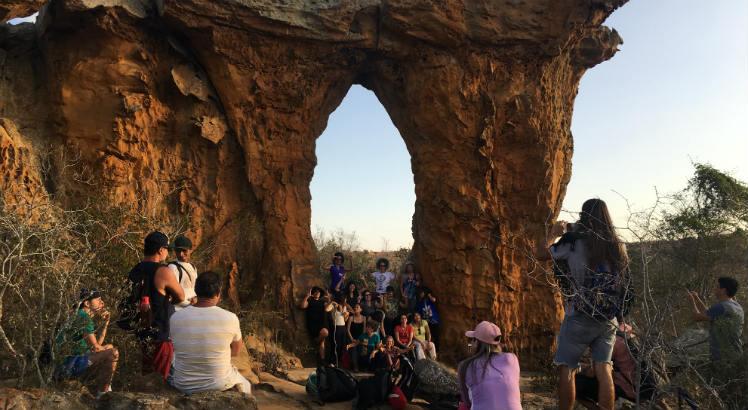
Vale do Catimbau - Trilha da Igrejinha
The view is even more stunning at dusk, when the last rays of the sun accentuate the orange contours of the rocks. This mystical place is one of the main postcards of the valley.
Among the many legends is that anyone who passes through the gorge enters another dimension.
Beliefs aside, the place, like so many others in the valley, seems to have a different energy. No wonder it’s a popular route for those seeking a closer contact with nature through meditation. We met a group of almost 20 people who had travelled from Recife to practise yoga.
“It is a place where we can integrate with silence, fresh air, nature and ourselves. So here we feel the difference of achieving that connection with the whole, which is within our reach everywhere, but here it seems easier,” says yoga teacher Camila Leal.
Tips for visiting the park
- Access: The park is located about 300 kilometres from Recife, the main access is through the town of Buíque, where you can find local guides.
- Best time to visit: The best time to visit Vale do Catimbau is during the dry season, from May to September, when temperatures are milder and trails are more accessible.
- Local Guide: It is highly recommended to hire a local guide, who will know the trails, stories and curiosities of the park well and will guarantee a safer experience.
- What to bring: Sunscreen, hat, water, snacks and comfortable shoes are essential. As the infrastructure is limited, it’s important to be well prepared.
The Vale do Catimbau National Park is an unmissable destination for those who want to get in touch with the nature, history and culture of the Pernambuco hinterland.
Where it is
The Catimbau Valley is located between the Agreste and Sertão regions of Pernambuco. The closest access is through the municipality of Buíque, in the state of Pernambuco.
It’s also 300 kilometres from Recife, where it’s safe to drive.
How to get there
You can also take a bus from the bus station in Recife/PE or drive from Recife/PE along the BR-232 motorway (towards the interior).
North East Tourist Guide
This post is also on:
![]() Português
Português ![]() English
English ![]() Deutsch
Deutsch ![]() Español
Español ![]() Français
Français



















